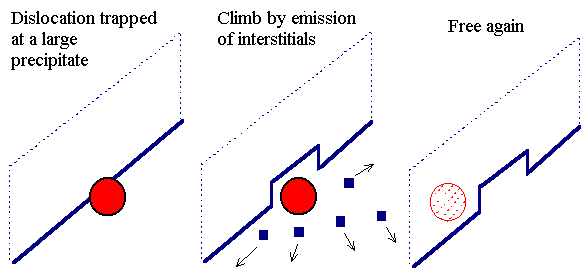 |
As we have already seen, dislocation
climb couples point defects and dislocations in a very direct way. This has the immediate
consequence that climb processes will depend on temperature, because: |
|
 |
The types and concentration of equilibrium point defects are temperature dependent. |
|
 |
The supersaturation, which is the driving force for point defect reactions including climb, is temperature dependent. |
|
 |
The mobility of point defects, i.e. their diffusion coefficient, is temperature dependent. |
 |
Unfortunately for most applications, climb makes immobile dislocations mobile
again (albeit they may move v e r y s l o w l y ). |
|
 |
Coupled to the slow dislocation movement by climb is a slow plastic deformation with a strong temperature
dependence, which would not occur without point defects - we have an ageing
mechanism. If screws lose their tension, cables start to bow, and metals suddenly fracture after years of dutiful
service, you are probably looking at the results of climb processes. |
|
 |
The major mechanism by which climb processes enable dislocations to move, is the circumvention of otherwise
insurmountable obstacles, as shown below. |
|
|
|
 |
Screw dislocations can climb, too, turning into a helix shape. Examples of climbed screw dislocations are provided in chapter 6 |
| | |
© H. Föll (Defects - Script)
